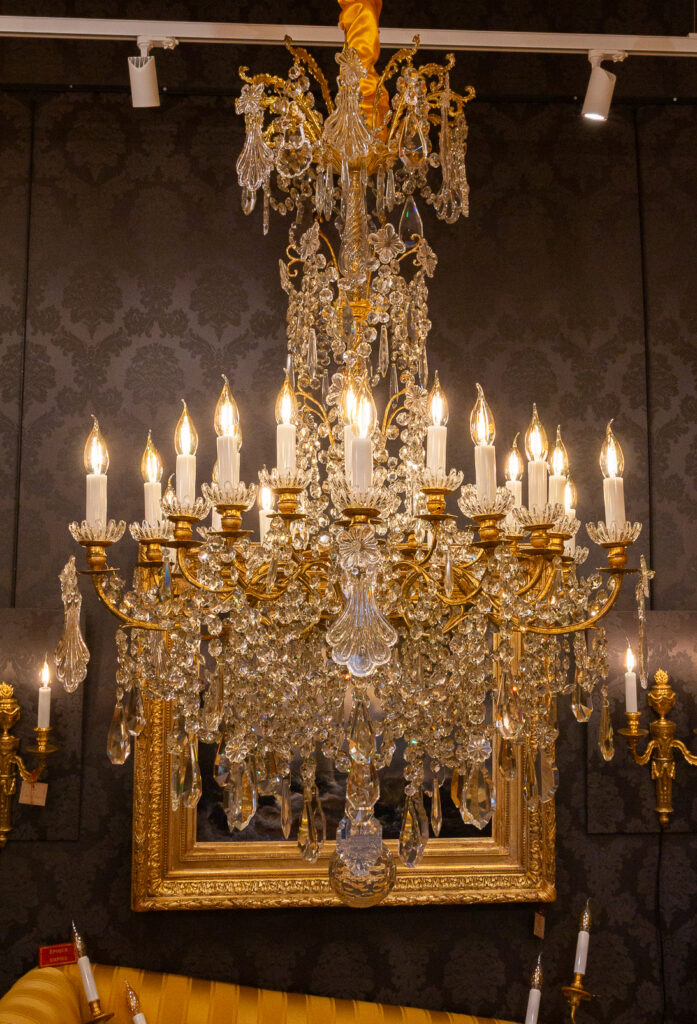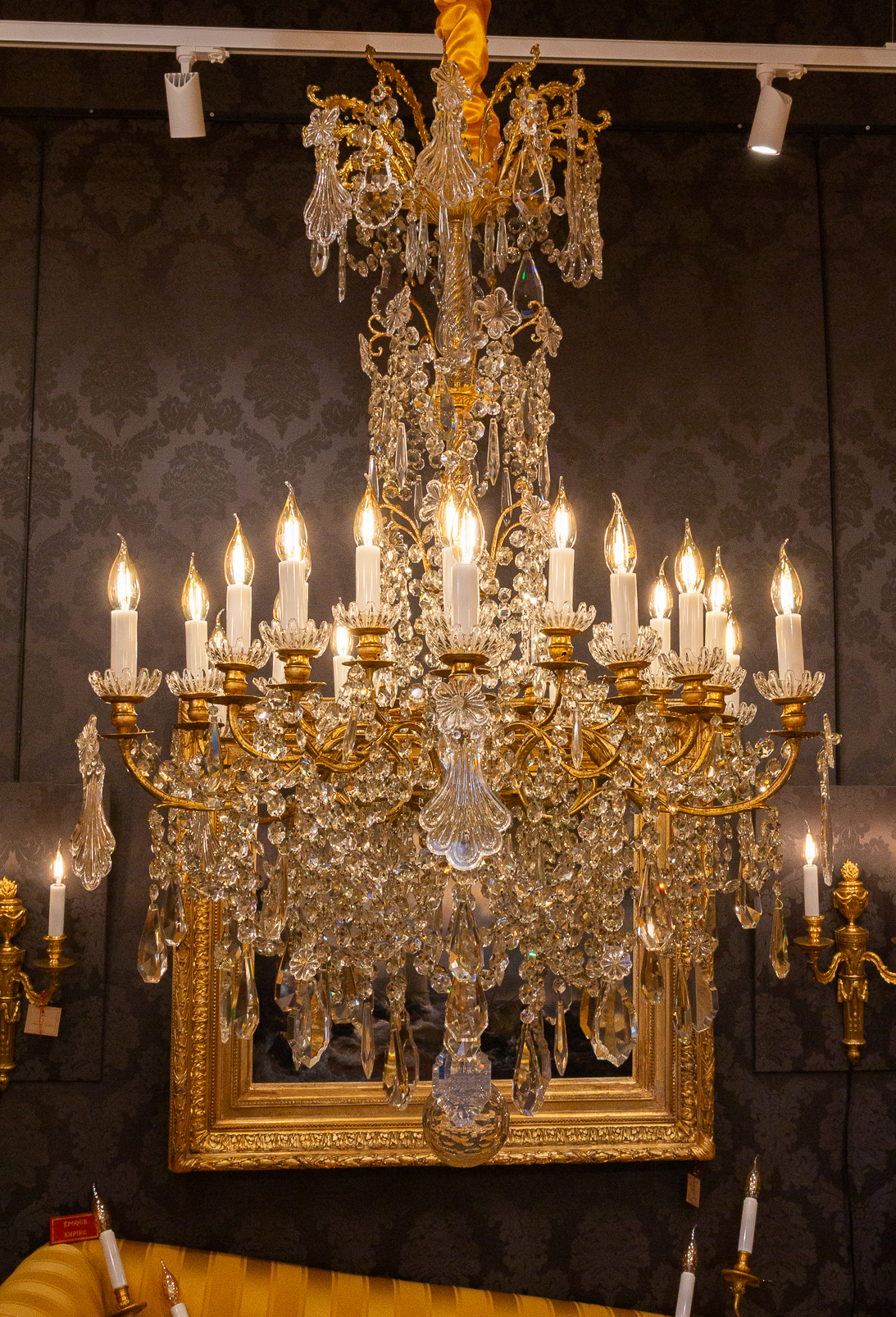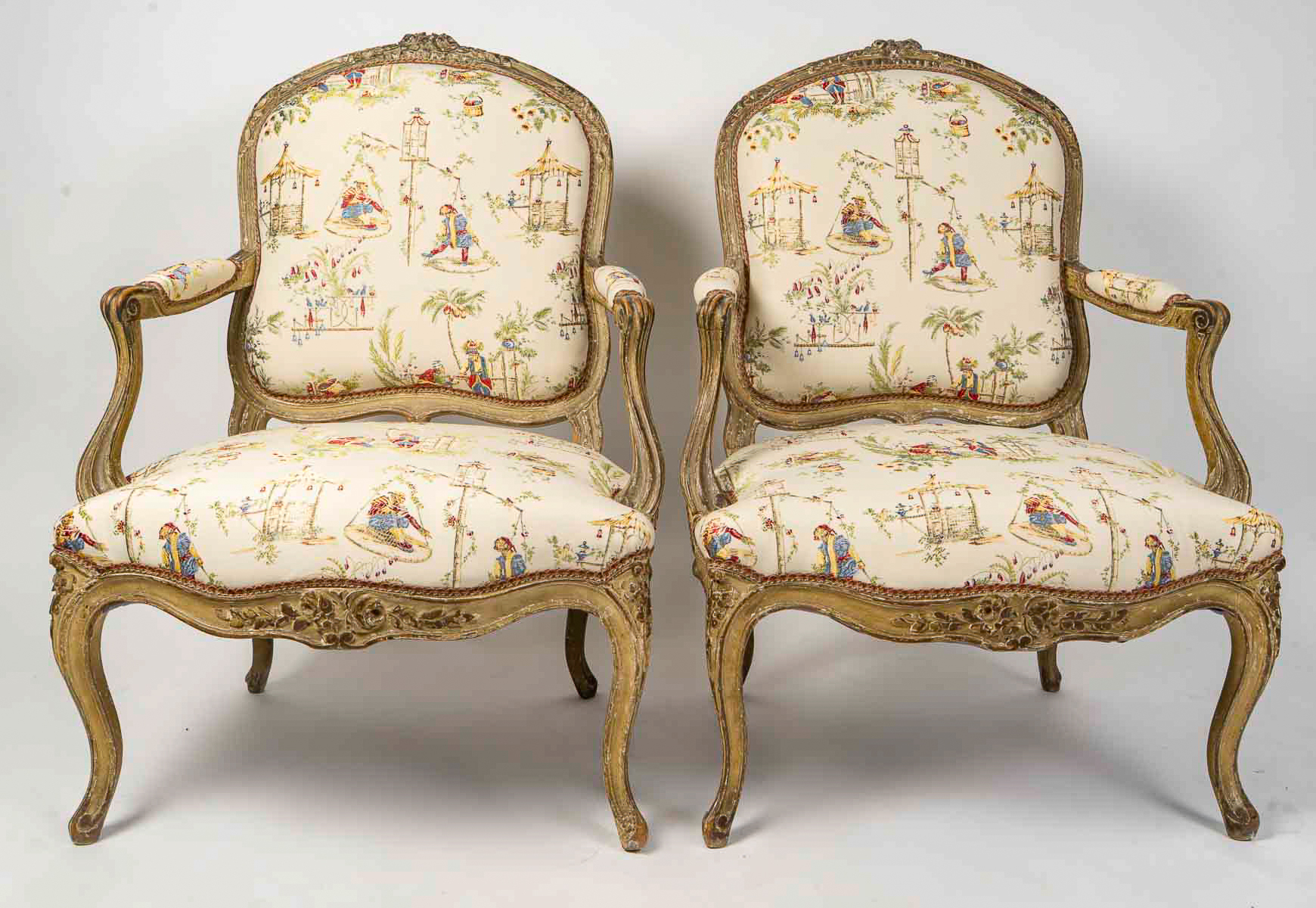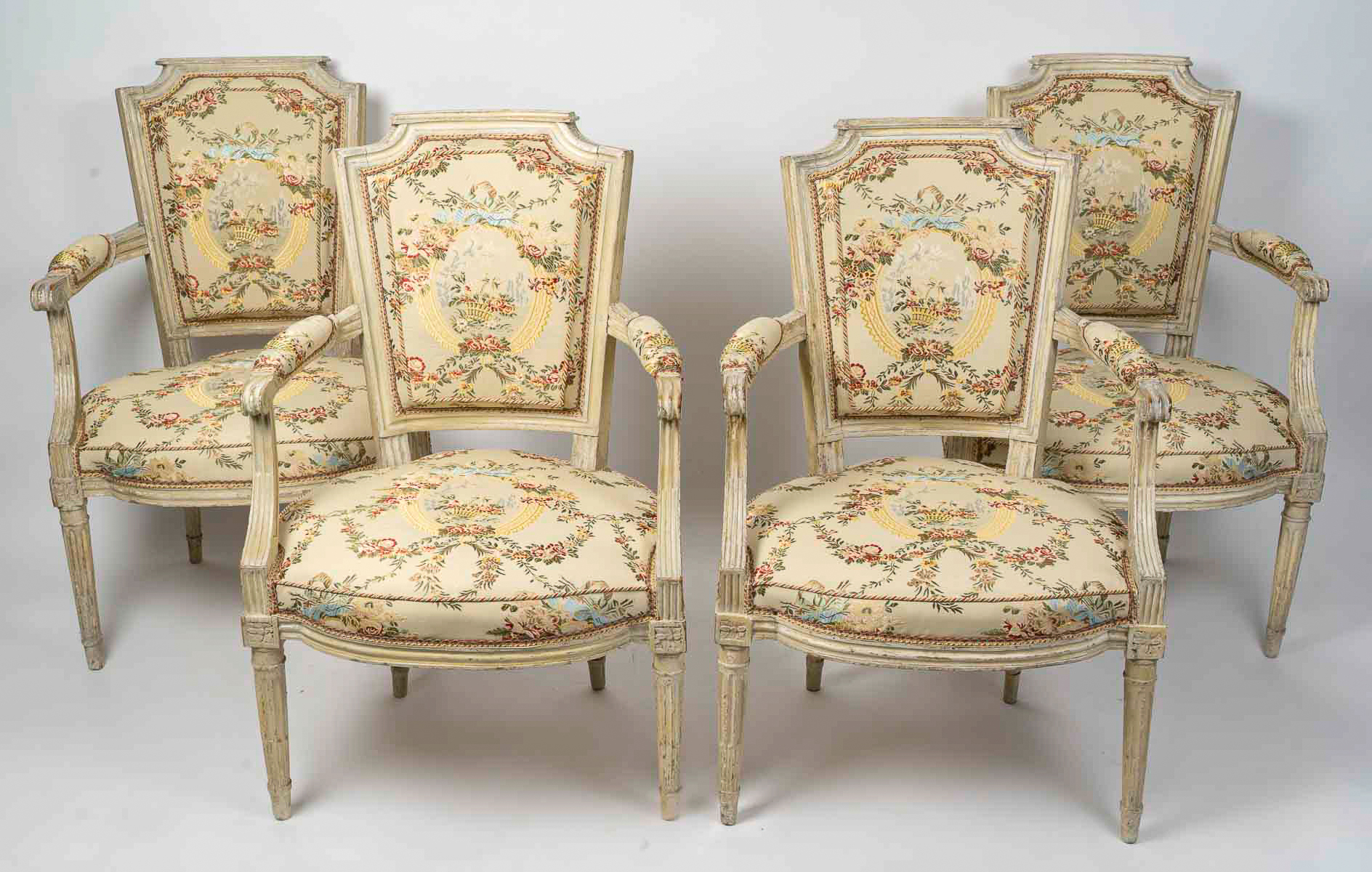Baccarat (signed) Twenty-Four Light Chandelier in Chiseled and Gilded Bronze Circa 1880
Description:
A splendid Louis XVI style chandelier in chiseled and gilded bronze, adorned with rich Baccarat crystal decor. It illuminates with twenty-four light arms over three tiers, featuring branch and leaf motifs.
Characteristics:
Style: Louis XVI.
Materials: Chiseled and gilded bronze, Baccarat crystal signed.
Period: Circa 1880.
Decor: Pressed and molded crystal, motifs of octagons, stars, mirza, plaques, and basins.
Center: A string of cut and twisted crystal.
Base: A large cut crystal ball.
Dimensions:
Height: 55.1 inches.
Diameter: 39.4 inches.
Condition:
In very good condition, original gilding, electrified to European standards. Possibility of conversion to American standards upon request.
Origin:
Magnificent French chandelier from the Napoleonic III period, crystal decor signed by the Baccarat Crystal Works.
History of Baccarat:
In 1764, French King Louis XV granted Louis-Joseph de Montmorency-Laval, Bishop of Metz, permission to establish a glassworks in the Lorraine village of Baccarat.
In 1824, Ismaël Robinet, a Baccarat glassmaker, invented an air-piston pump that facilitated glassblowing. The following year, Baccarat developed the press-molded technique.
In 1855, Baccarat took part in the first Paris Universal Exhibition, exhibiting two monumental candelabras and a chandelier.
In 1860, on October 29, Baccarat registered its trademark with the Paris Commercial Court: a carafe, a stemmed glass and a beaker inscribed in a circle. Initially printed on a paper label, the stamp was later engraved directly onto the piece.
Baccarat crystal is of the highest quality, containing no less than 31.7% lead, with no defaults and the highest standards. Cristallerie de Baccarat has been passed down through the generations and remains a symbol of French art de vivre.




